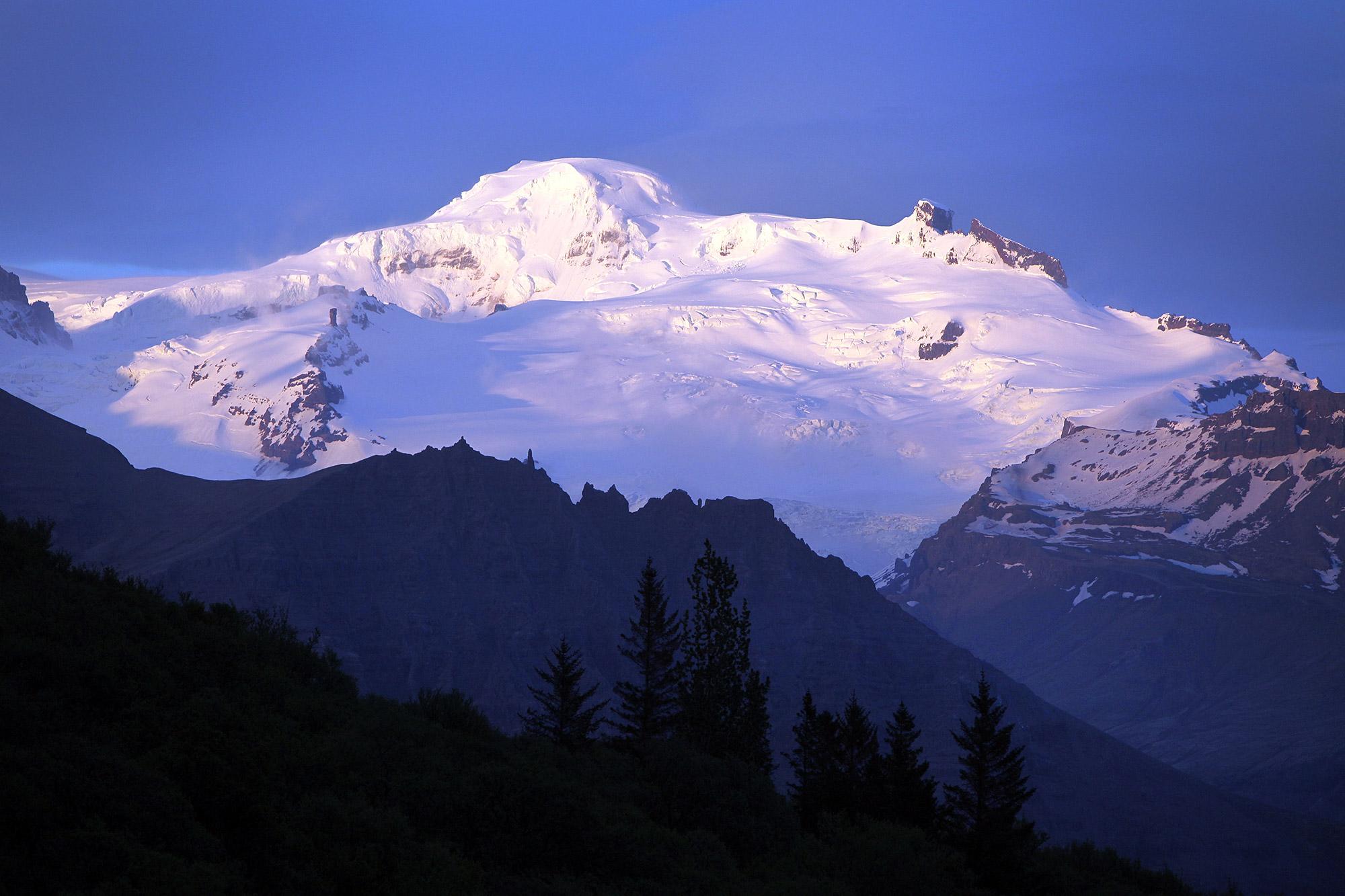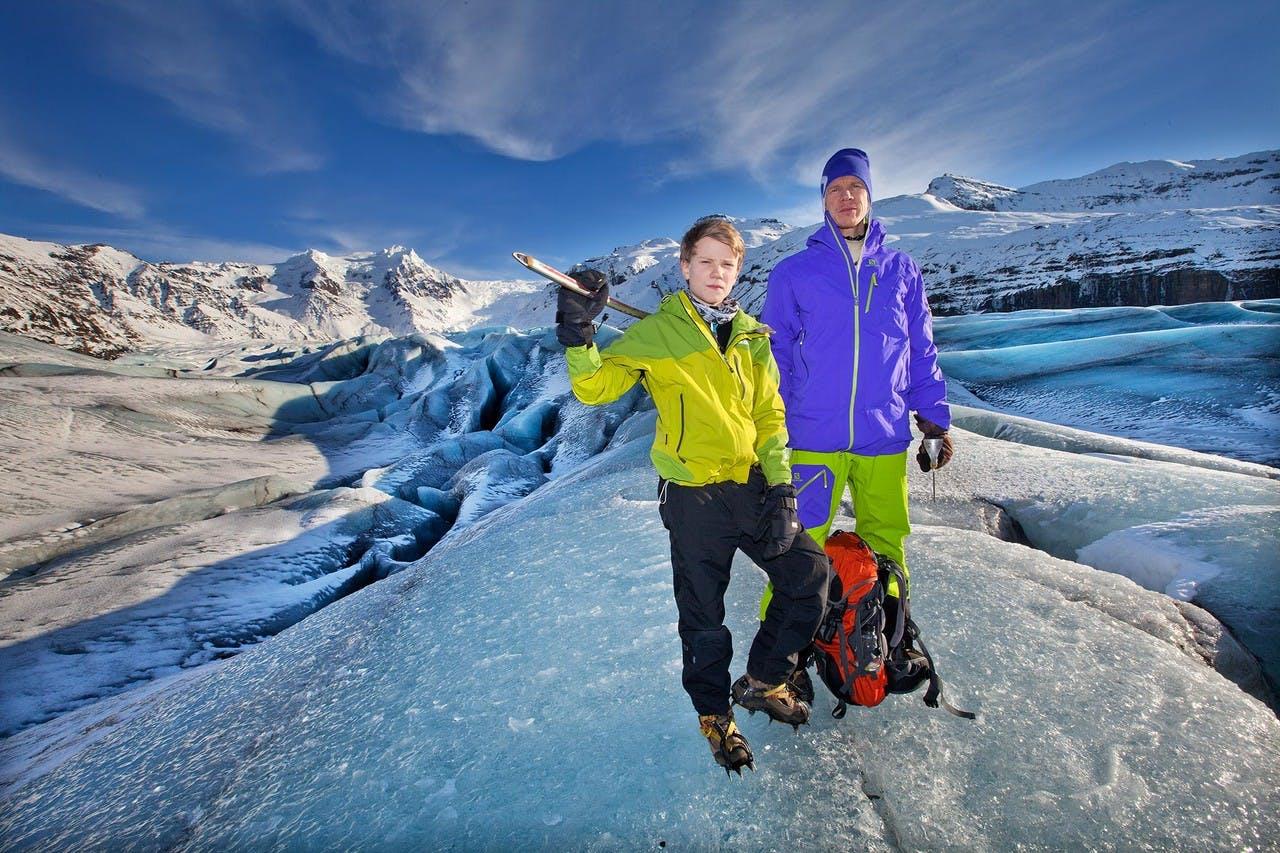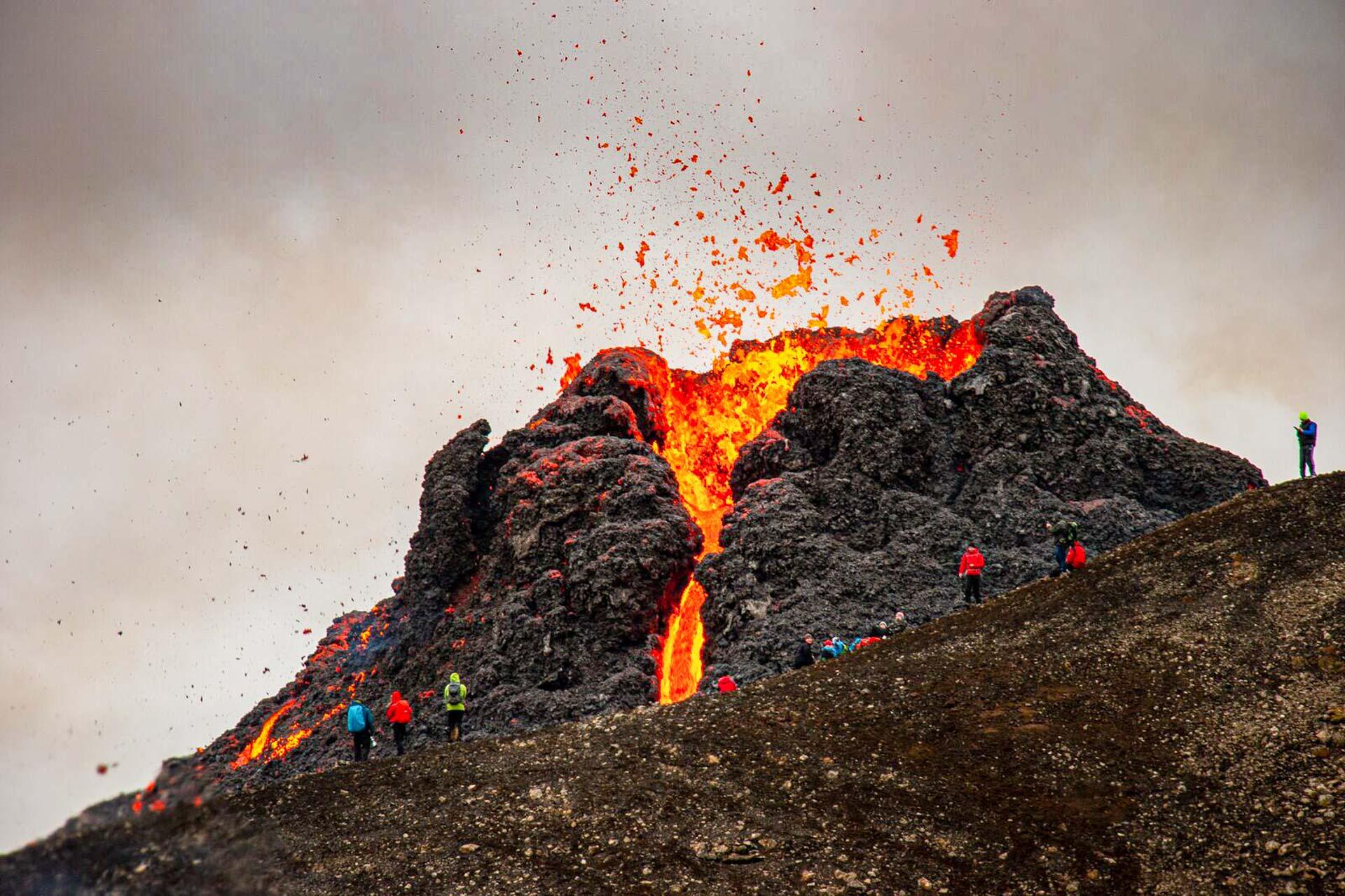A Guide for Eco-Conscious Travellers in Iceland
| All, Travel Guide, TIPS AND TRICKS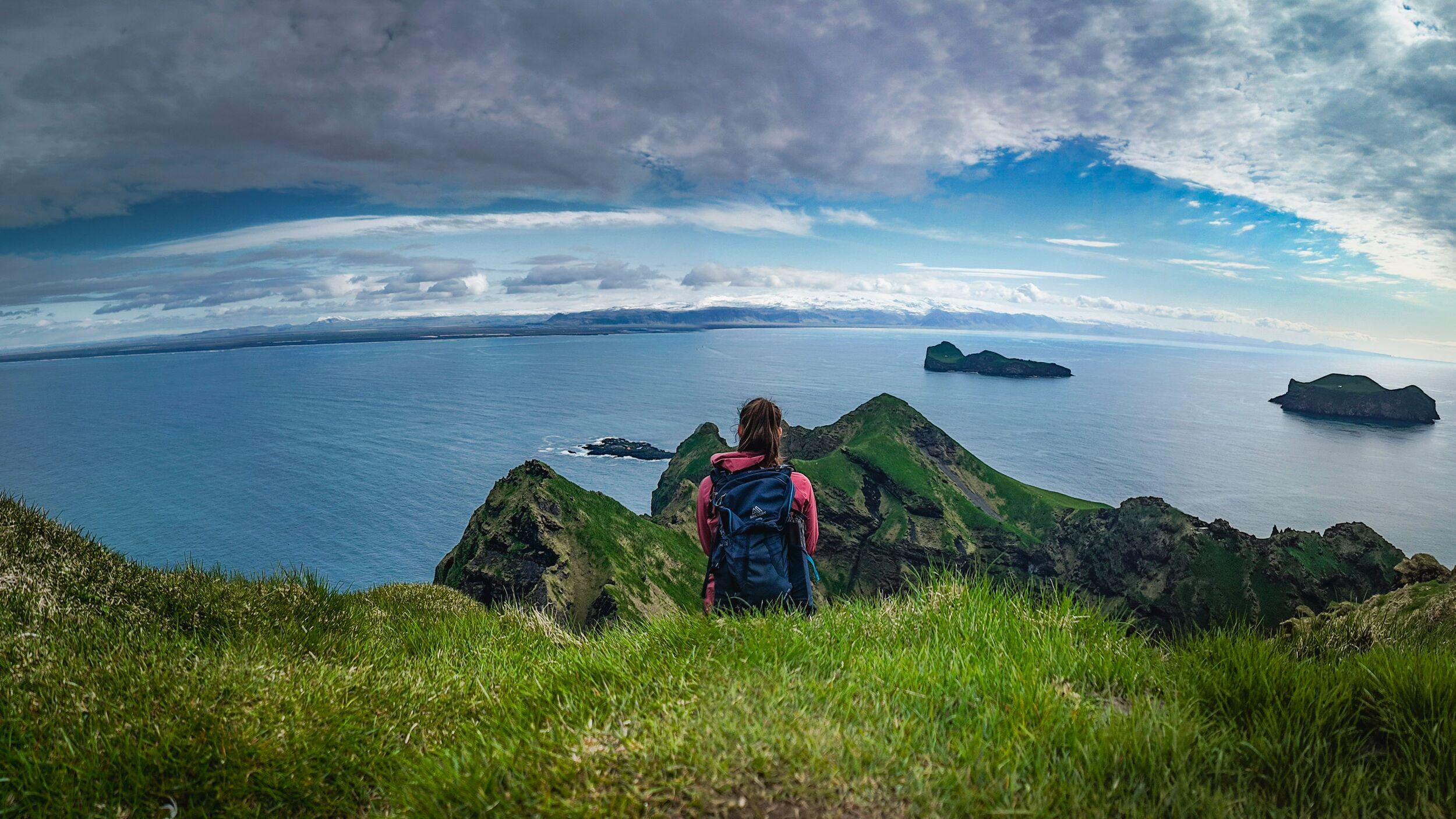
As the adage goes: take only memories, leave only footprints. (Though less poetic, we’ll tack an “… on marked trails only” to the end of that sentiment.)
Icelandic Mountain Guides are champions of sustainable adventure. That means designing eco-friendly tours in Iceland, educating travellers and preserving the land for future generations. If you’re planning a hiking or glacier trip, here’s how to do it responsibly.
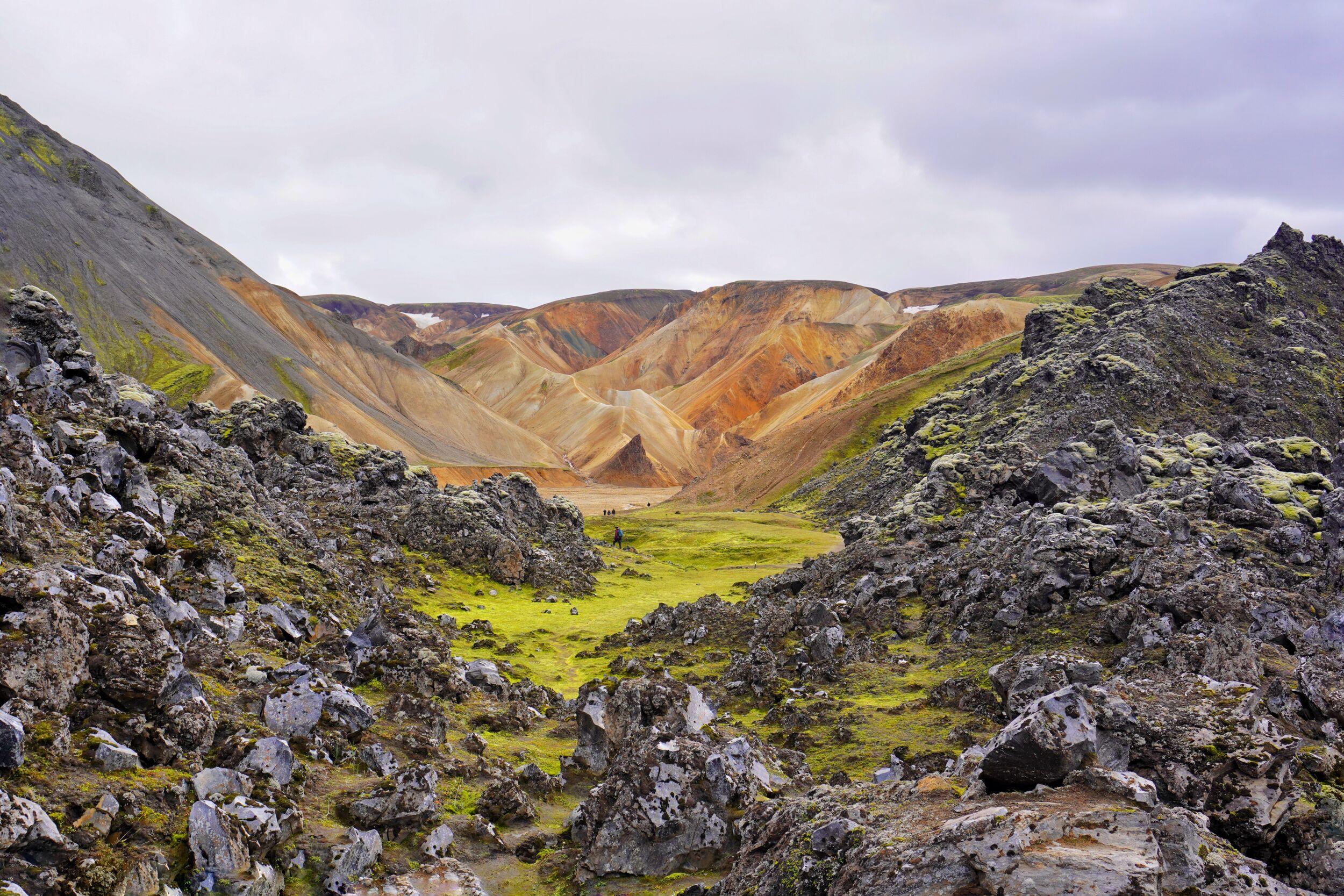
Why Responsible Travel Matters in Iceland
Iceland’s landscapes are breathtaking, sure, but they’re also remarkably fragile. Shaped by fire and ice, the country’s glaciers, moss-covered lava plains and black sand beaches combine to form an undoubtedly stunning environment. However, this beauty exists within ecosystems that are extremely delicate and slow to recover from damage. For example, the moss that carpets much of the countryside can take decades — even centuries — to regrow if trampled. Similarly, volcanic soils erode easily and, once disturbed, the scars remain visible for generations.
Because of this vulnerability, responsible travel in Iceland is essential. Visitors should remain on marked paths and trails to prevent soil erosion and avoid damaging vegetation. Driving off-road can leave permanent tire marks across the land. As such, it is strictly prohibited.
Respecting road and trail closures around sensitive areas ensures that natural habitats can regenerate without human interference.
Equally important is minimizing waste and respecting local communities. Carrying out all trash, waiting for the next service station to answer the call of nature, using refillable water bottles, and choosing accommodations and tours that prioritize sustainability will all reduce your impact on Iceland.
By practicing sustainable hiking in Iceland and joining responsibly-run glacier tours, you can help protect Iceland’s phenomenal landscapes while still enjoying their magic.
7 Tips for Sustainable Hiking & Glacier Adventures in Iceland
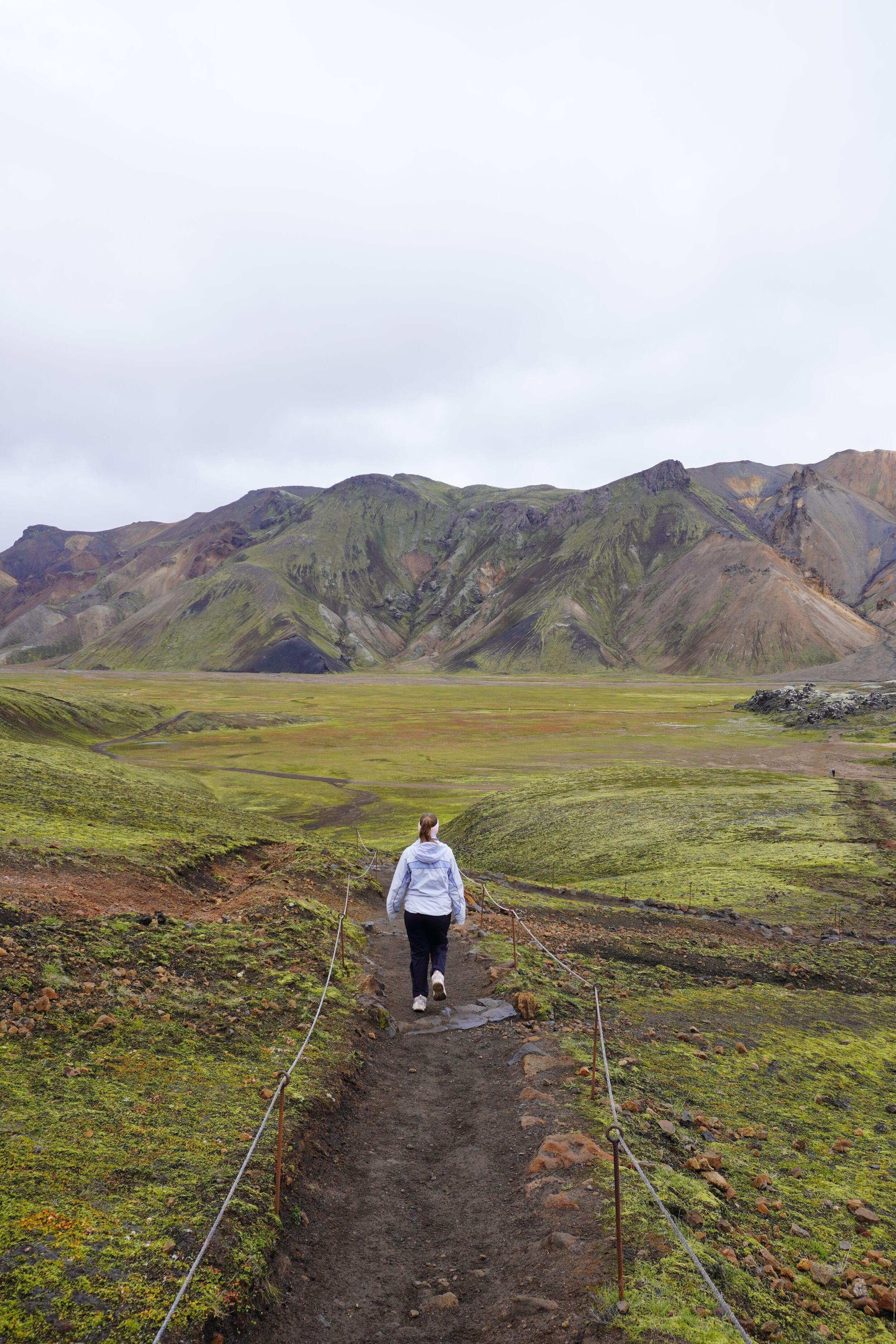
1. Stay on Marked Trails
Venturing off designated paths can damage delicate vegetation and cause soil erosion. Whether you’re on the iconic Laugavegur Trail or exploring idyllic Fjallabak Nature Reserve, stick to marked routes to keep nature intact.
This is also an important rule of thumb for your own safety. Iceland’s nature is as wild as it looks, and some potentially dangerous surprises can lurk beneath the surface. Keeping to marked paths will ensure you won’t end up needing rescue from a cave or crevasse, of seeking medical attention for burns inflicted by geothermal water.
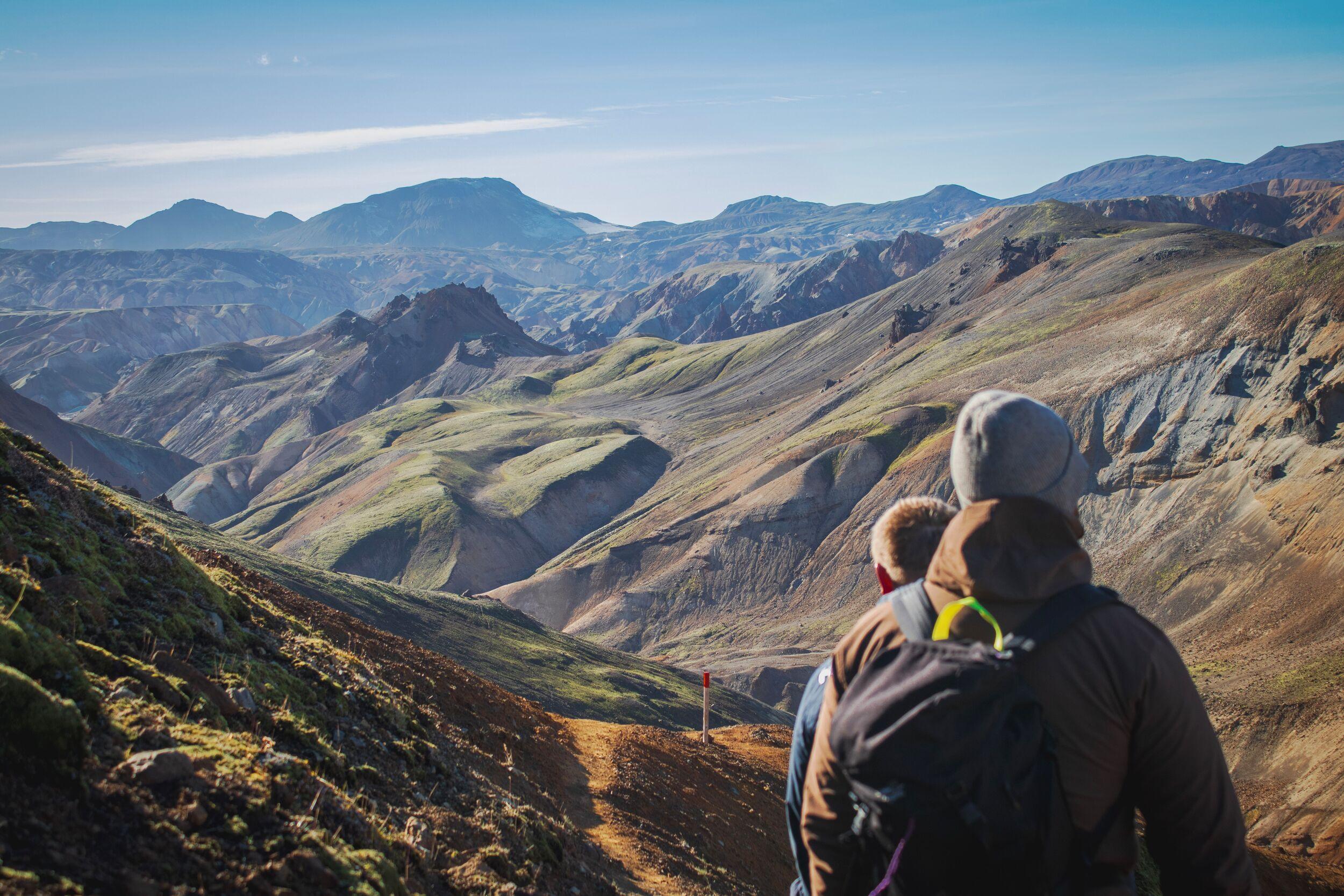
2. Pack In, Pack Out — Always
There are no trash bins in the wilderness. Choosing to leave anything behind — be it a water bottle or a wad of toilet paper — is choosing to sully Iceland’s environment, wildlife and water quality. Carry a reusable bag for all your rubbish and carry it with you back to the trailhead to dispose of in a bin.
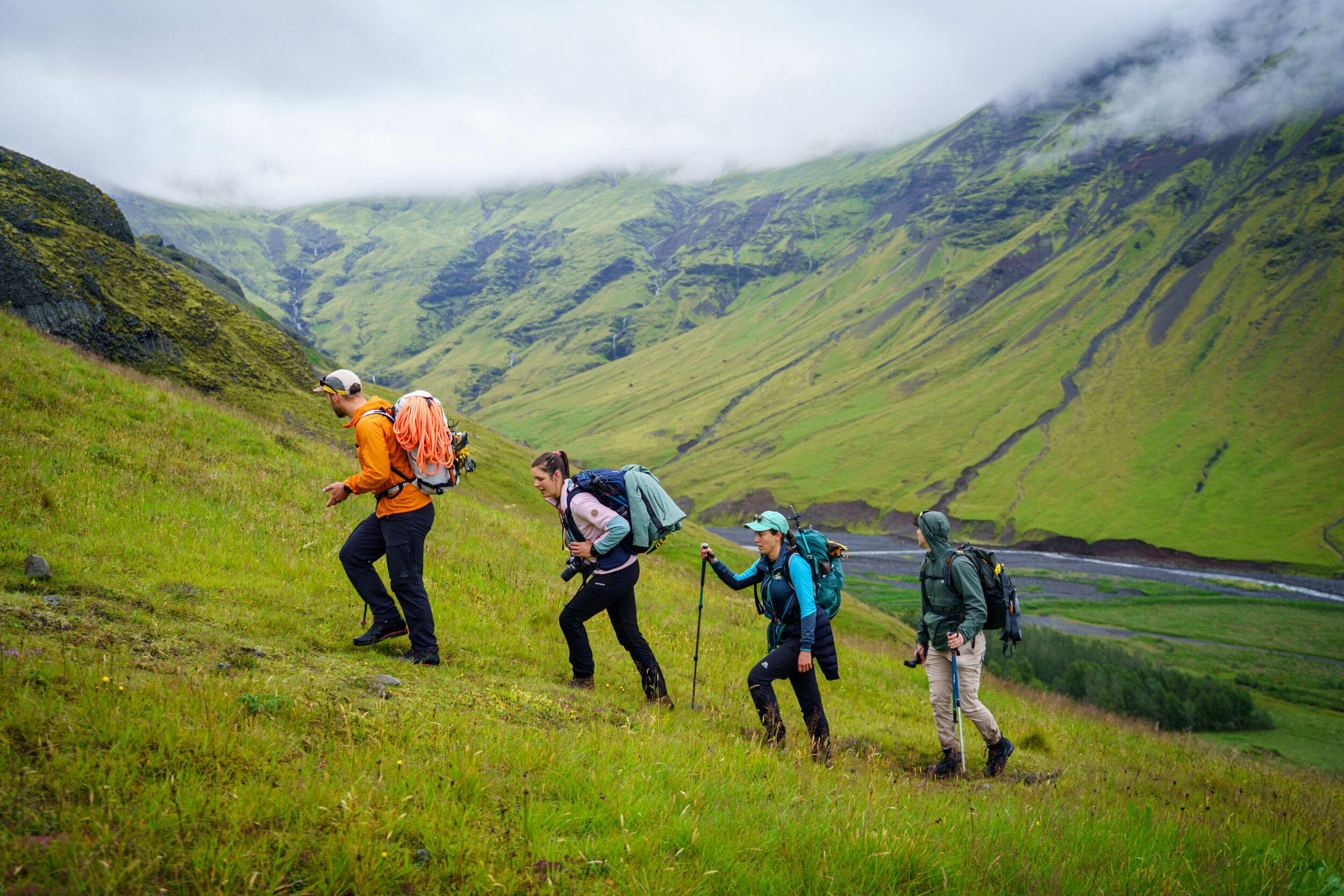
3. Choose Certified Guides & Tours
Local guides know the land and the regulations in place to protect it. When you join eco-friendly tours in Iceland with Icelandic Mountain Guides, you’re supporting responsible tourism practices that minimize environmental impact.
You’re also putting your safety and enjoyment of the experience first. Icelandic Mountain Guides knows the landscapes they’re guiding in and know how to give travellers an unforgettable experience without putting travellers or the environment in jeopardy.
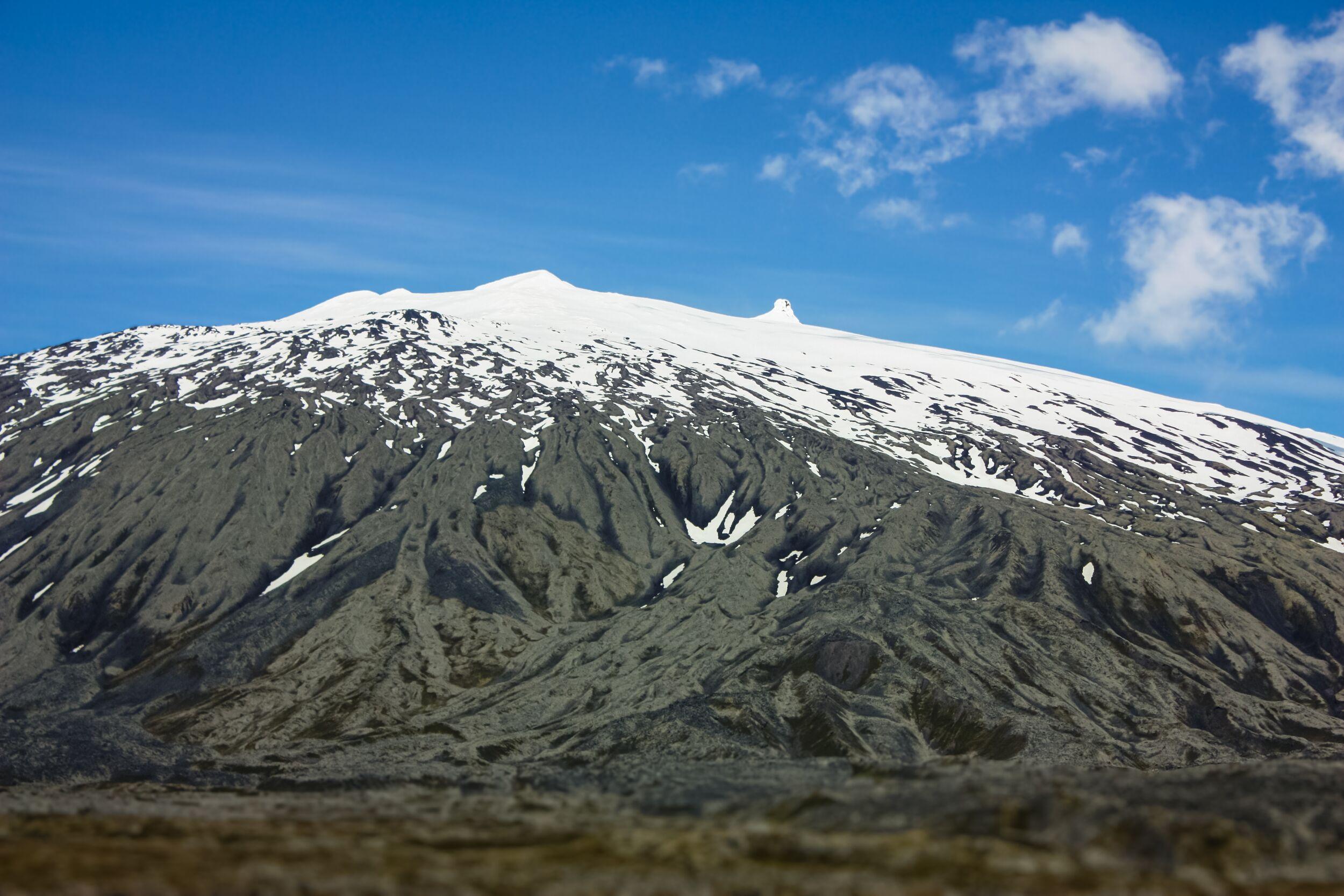
Tread Lightly on Glaciers
Glaciers are living ecosystems and climate change indicators. During tours like the Snæfellsjökull Glacier Hike or Glacier Trail Panorama, always follow your guide’s instructions, follow in their footprints and never carve or mark the ice.
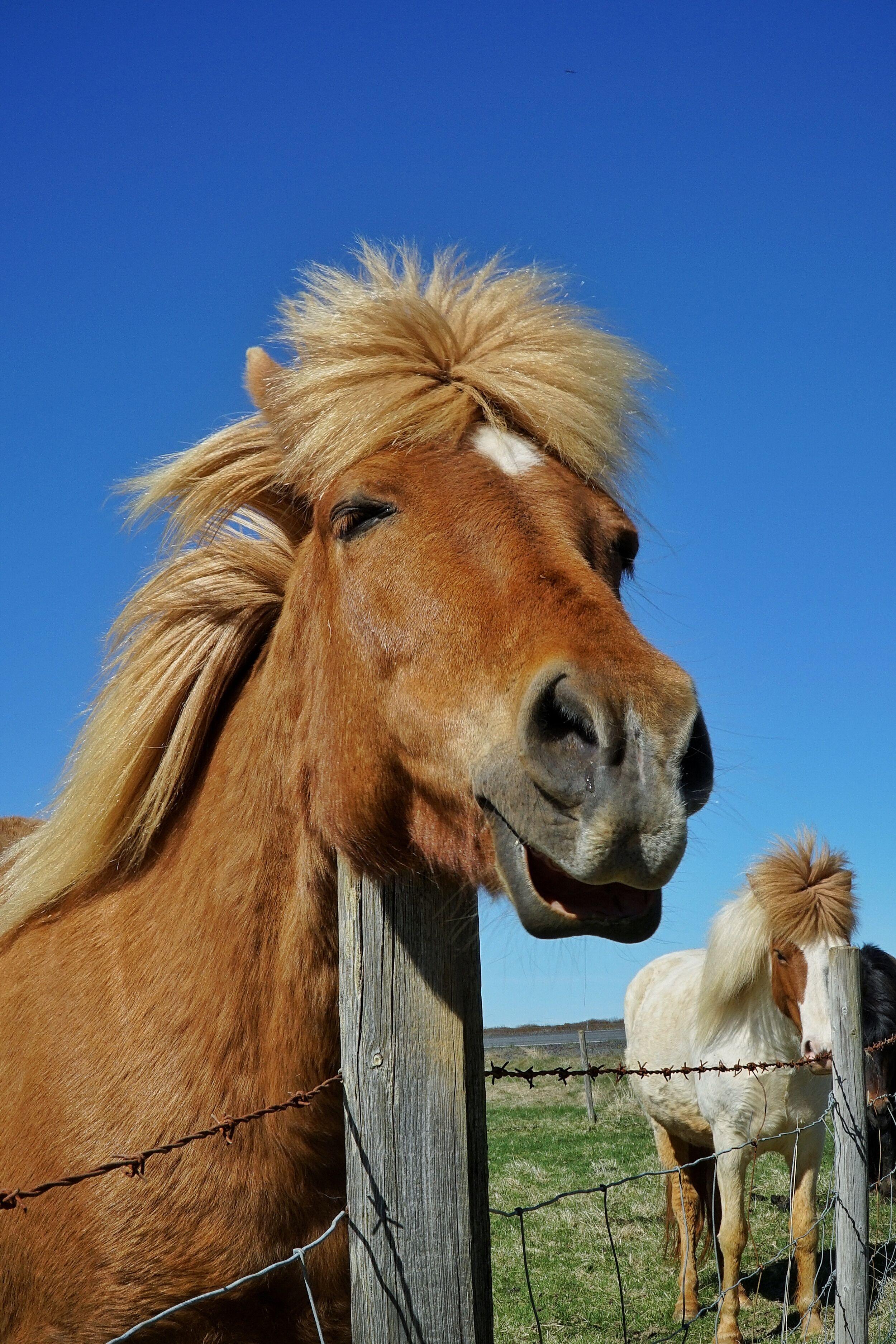
5. Respect Wildlife and Silence
Bird cliffs, Arctic fox habitats and reindeer grazing areas are part of what makes Iceland wild. Observe from a distance and keep noise levels low so you don’t disturb them. This similarly applies to domesticated animals. It’s a treat to spot Iceland’s horses and sheep standing on the roadside, but leave it at looking unless invited by a farmer to pet or feed the animals.
Flying drones close to animals — wild or domesticated — is going to stress them out, when they should just be enjoying their natural landscapes without interruption.
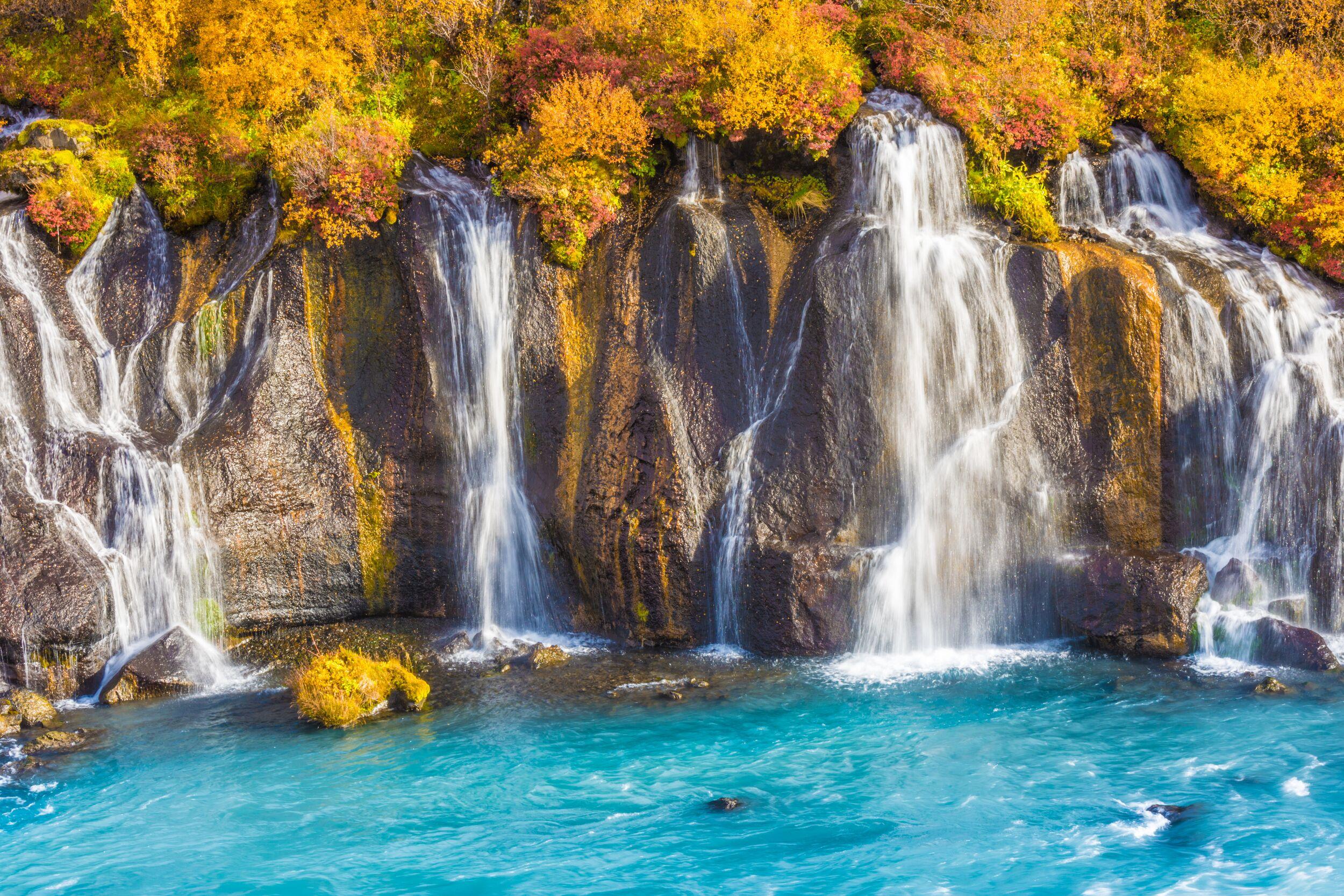
6. Carry a Reusable Water Bottle
Though bottled water is sold in grocery and convenience stores in Iceland, you won’t find the locals buying it. Why? Because the cold water that springs freely from the tap is as clean and refreshing as the fanciest bottled brand out there.
Bring a reusable water bottle with you to Iceland and fill it up in your hotel of guesthouse before venturing out for the day. You’ll stay hydrated without contributing to Iceland’s landfills.
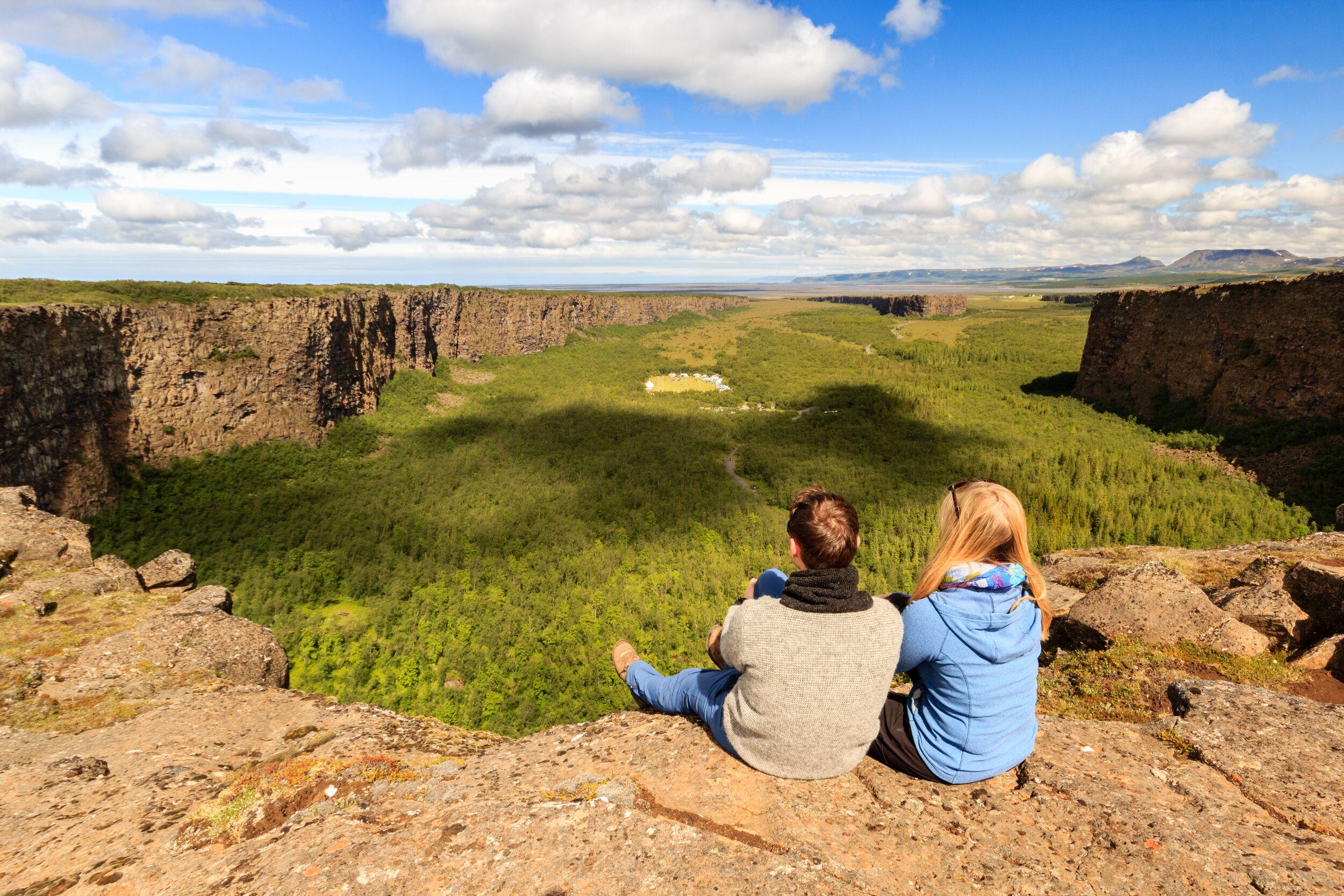
7. Travel in Small Groups
Travelling in small groups is the best way to soak up all your tour guides’ impressive knowledge and glacier trivia, while potentially bonding with new friends over your shared love of crampons. From an environmental perspective, moving in smaller groups reduces trail erosion, limits wildlife disturbance and provides a more authentic wilderness experience.
Icelandic Mountain Guides’ Explore Wilderness or the Shadow of Vatnajökull tours are designed with this in mind.
Sustainable Hiking & Glacier Adventures in Iceland
You’ve packed your reusable water bottle, stocked your pack with bags to carry our your waste, and briefed yourself on the dos and don’ts of travelling in Iceland. It sounds like you’re ready to experience Iceland’s wonders the responsible way. Here are some of Icelandic Mountain Guides’ most popular eco-friendly tours in Iceland:
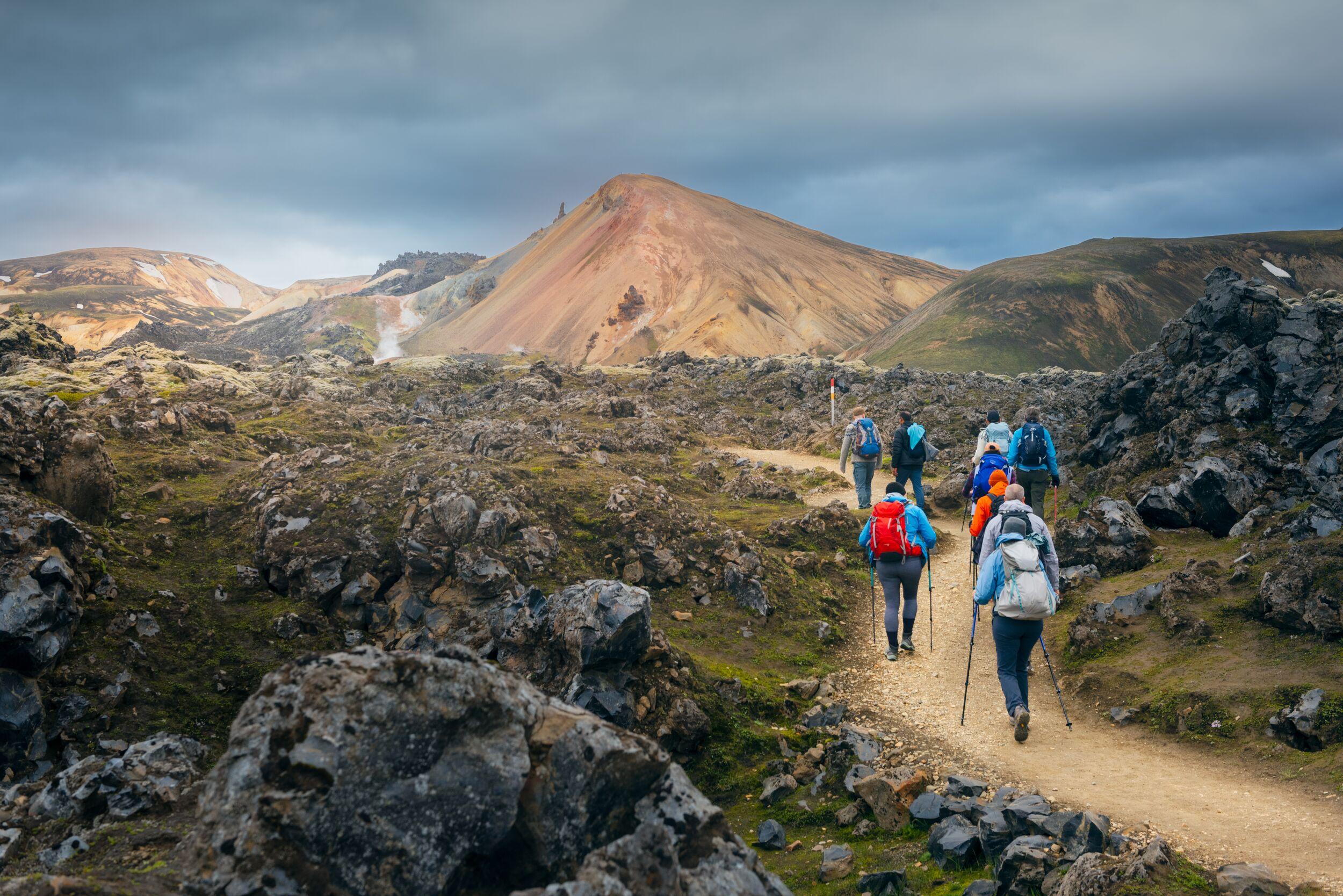
1. Laugavegur Trek Basic
Hiking enthusiasts come from all over the world to traverse the Laugavegur trail. Its reputation is well-earned, with varied landscapes unlike anything else on Earth. The trail takes trekkers over colorful rhyolite mountains, through black sand deserts, ancient craggy lava fields and into the lush greenery of Þórsmörk.
Icelandic Mountain Guides' experienced and knowledgeable guides will lead you through these extraordinary landscapes on an unforgettable four-day trek. Each day sees your small group of adventurers hiking four to seven hours between mountain huts, where you'll kick up your feet, feed your body and rest up for another day of mind-boggling sights.
Those wanting to tick a major experience off their bucket list need look no further.
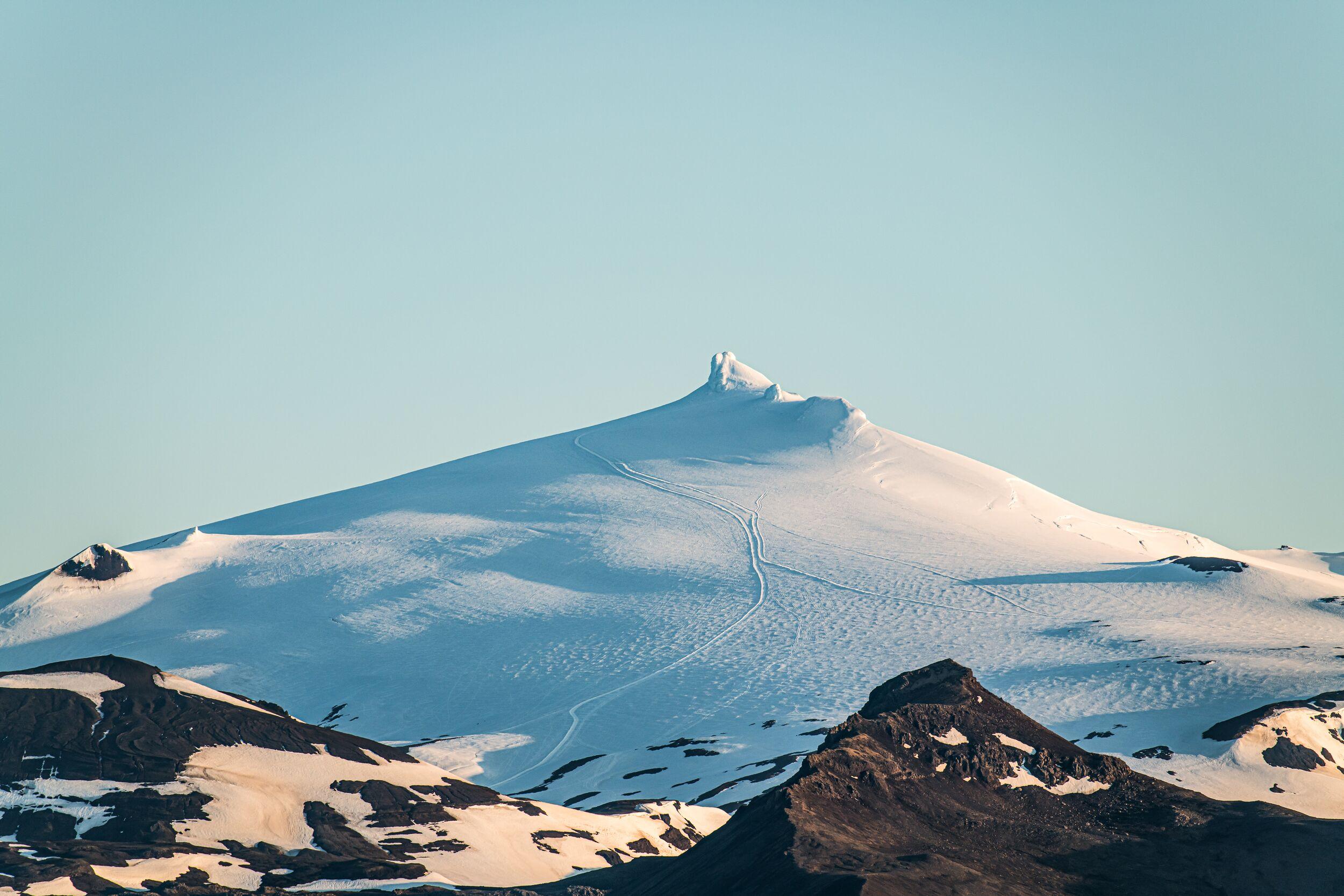
2. Snæfellsjökull Summit Hike
Snæfellsjökull, Iceland’s glacier-capped volcano, is steeped in lore—believed a gateway to other realms, sacred in sagas, famed as Jules Verne’s subterranean portal, and long revered for mystical, magnetic power. No matter the weather, it often appears to be glowing — truly the crown jewel of the Snæfellsness Peninsula on which it sits. The peninsula is often called "Iceland in miniature" because it's home to many of the natural phenomena that make Iceland such a special place.
You'll be able to feel the magnetism of the place for yourself on a one-day guided hike to the glacier's summit, where you'll be rewarded with views stretching from Reykjanes Peninsula in the south to the West Fjords in the North.
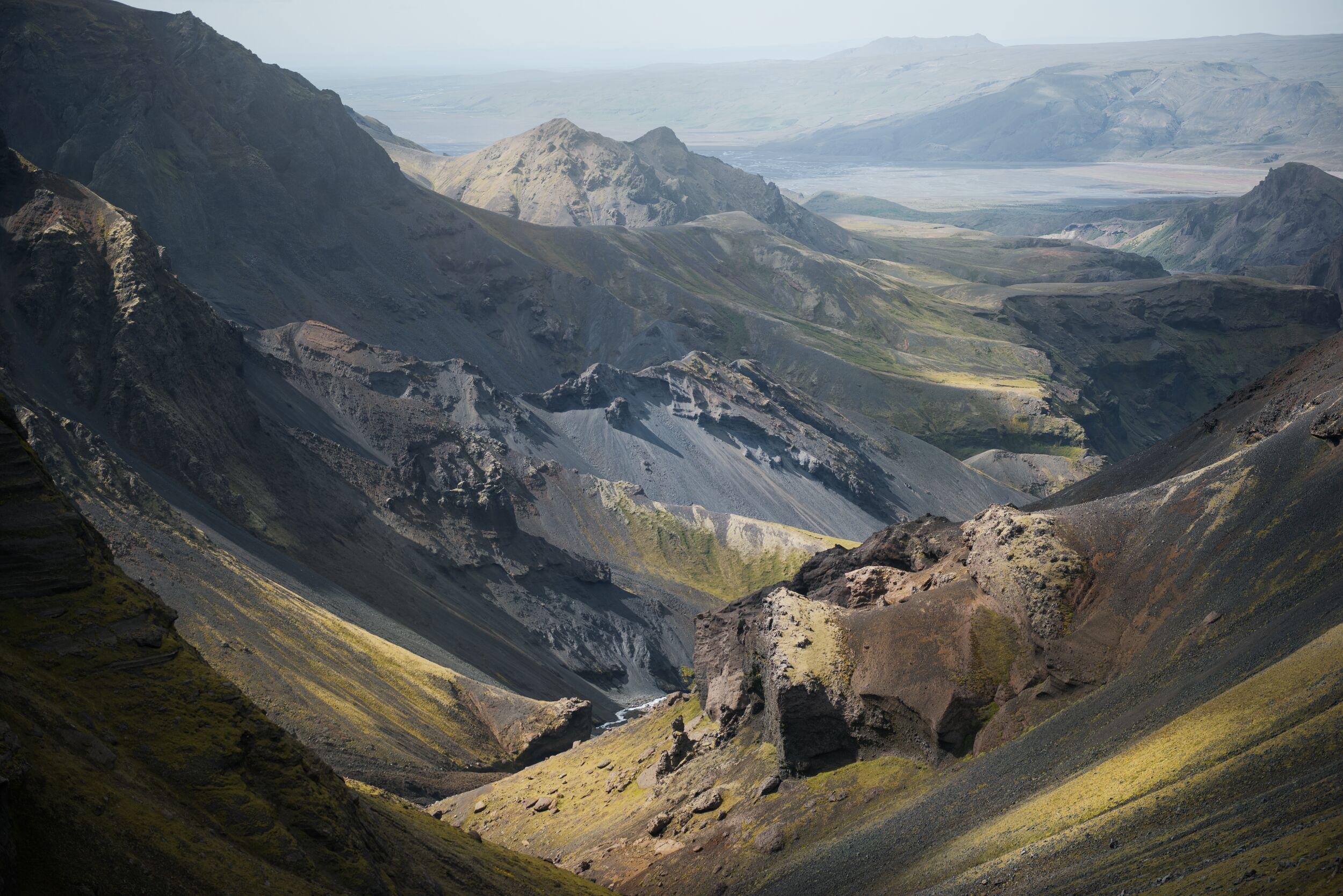
3. Day Hike over Fimmvörðuháls
Before Eyjafjallajökull blew its top in 2010 and put the eyes of the world on Iceland (sorry about those flight cancellations, y'all), there was the eruption at Fimmvörðuháls, which dazzled with its lava waterfalls over glacial terrains. With the area long since cooled back down, the Fimmvörðuháls pass is an epic area for a day-hike.
On this sustainably-run trek, your guide will lead you from the iconic Skógafoss waterfall, through the aptly-named "waterfall way" (what else would you call an area dotted with no less than 26 flowing cascades?), between Eyjafjallajökull and Mýrdalsjökull glaciers, and into the verdant Þórsmörk valley. This is one day with countless memories to be made.
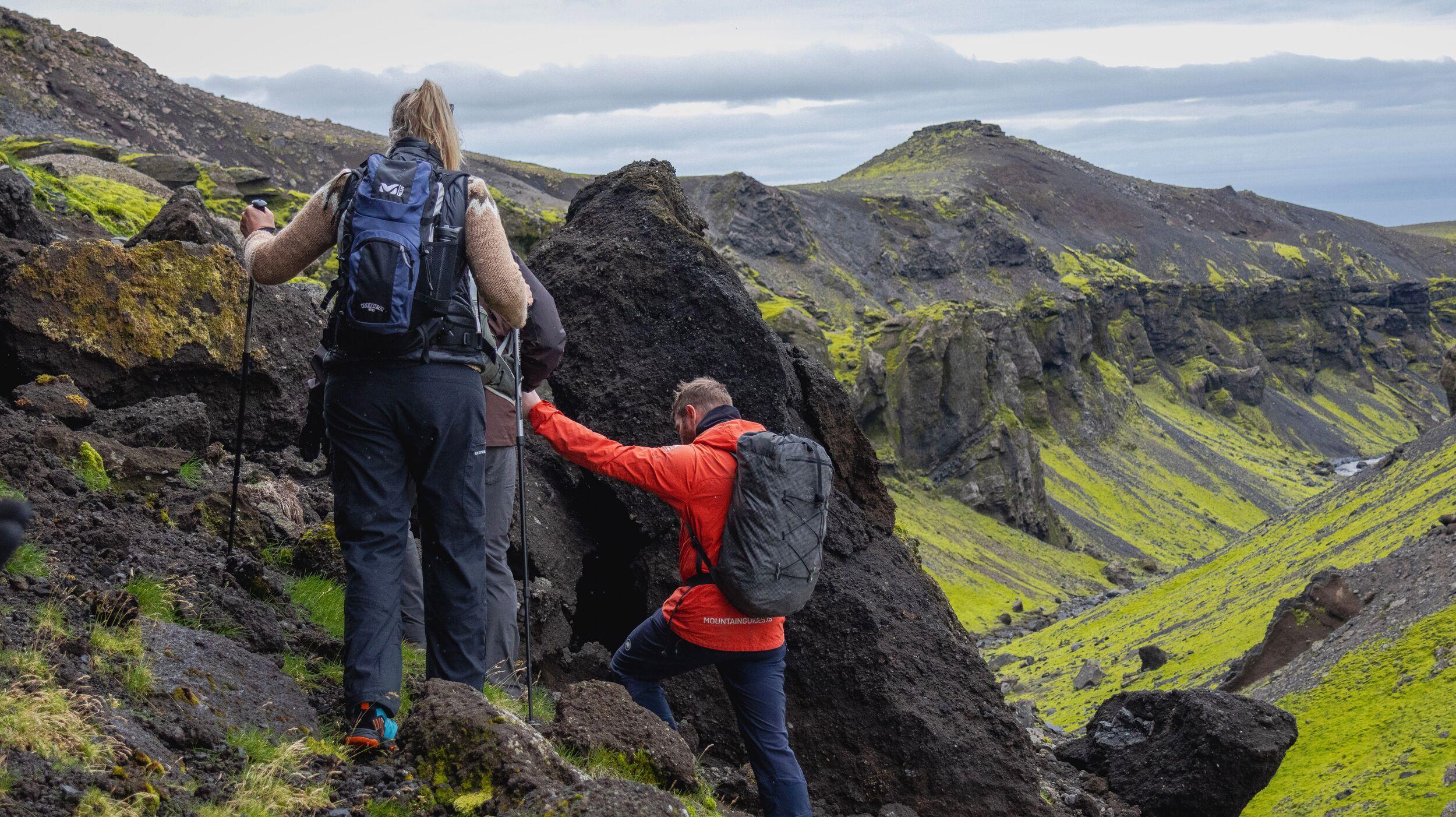
4. Glacier Panorama Trail
Anyone who has driven Iceland's Ring Road knows the feeling of coming around a bend and spying the enormity of a glacier in the distance. For many driving the South Coast from Reykjavík, the first glimpse of an ice giant is the Sólheimajökull, an outlet glacier of the larger Mýrdalsjökull glacier. It's the accessibility of Sólheimajökull that makes it an ideal launch pad for environmentally-conscious adventures.
On the Glacier Panorama Trail, you'll hike along, over and above Sólheimajökull, over rocky terrain and even through a glacial river — it doesn't get much more Icelandic than that! Of course, you’ll have an experienced guide leading the way, keeping the group on the marked trail and instilling a love and respect for the area’s wild nature.
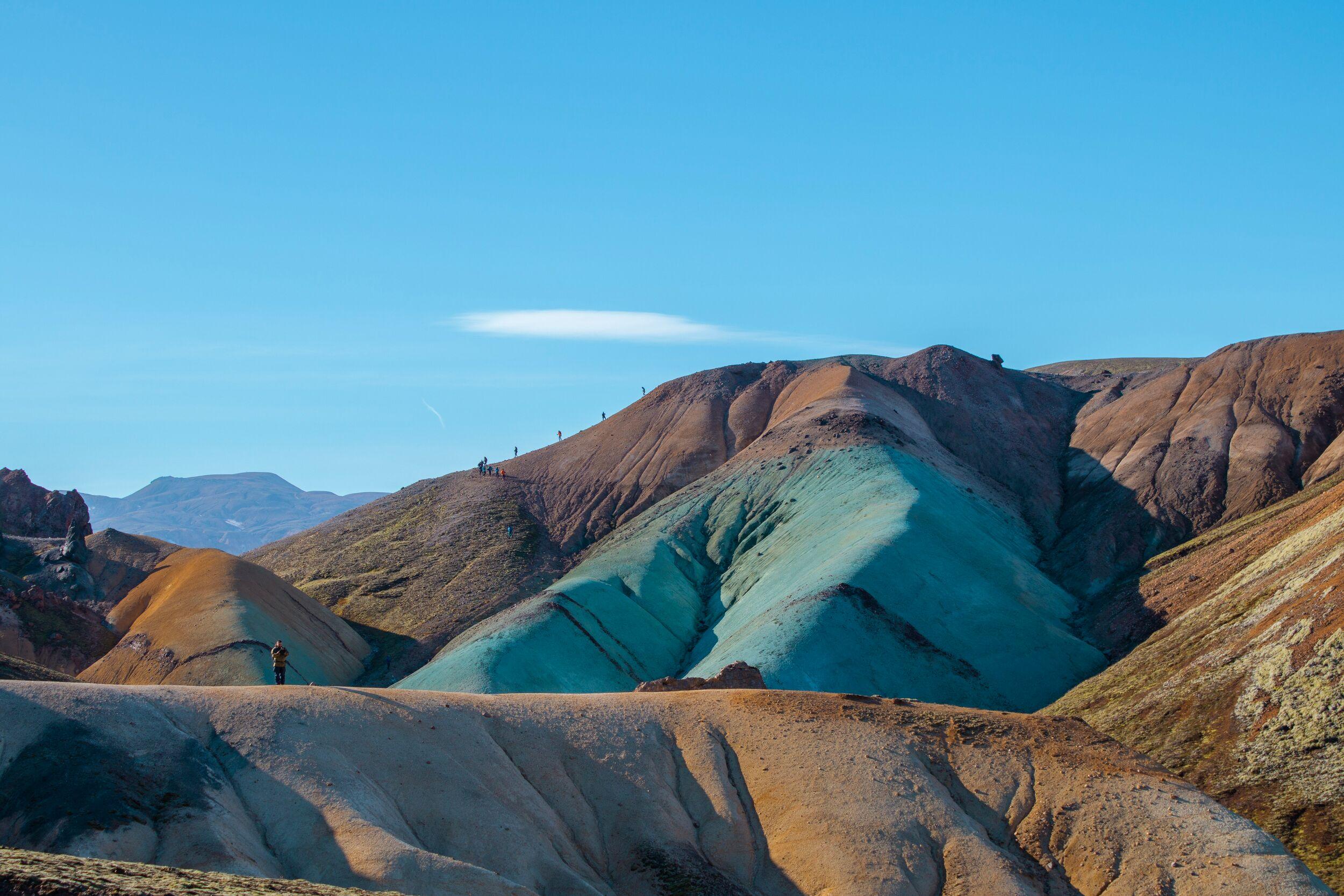
5. The Green Ridge Hike
In Landmannalaugar, colourful rhyolite slopes contrast with deep lava fields and steaming springs. The area’s hiking trails lead through shifting tones of earth and stone, offering travellers a rare blend of rugged grandeur and quiet refuge.
On this expertly-guided hike, you'll get to experience Grænihryggur, the Green Ridge, deep in the Fjallabak Nature Reserve, and marvel at its emerald hues, which were created when molten rhyolite from an eruption solidified rapidly under a glacier to form glass. Yep, this mountain ridge is unaltered, silica-rich glass. This is a spectacle few visitors to Iceland get to experience.
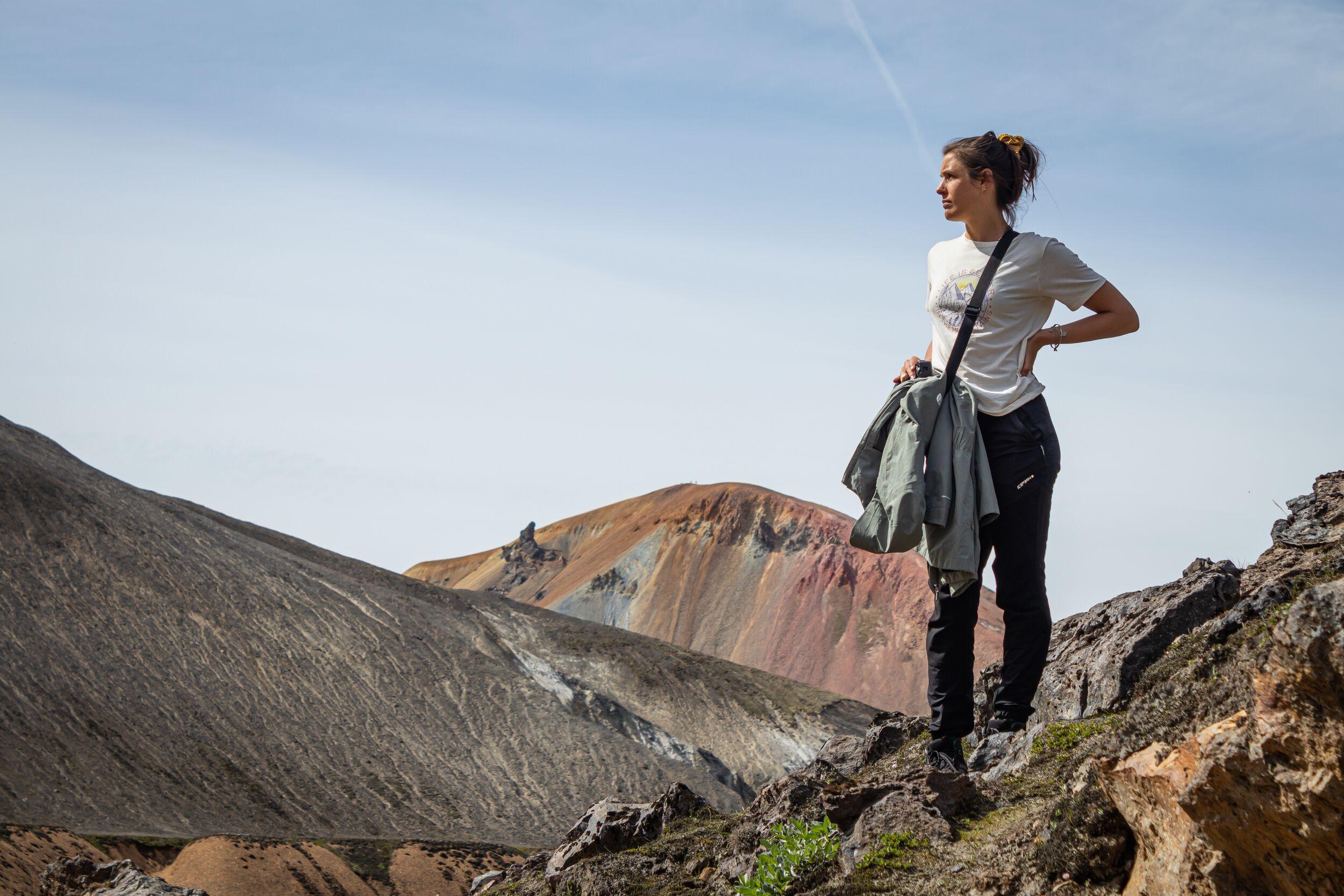
Tread Lightly, Friends
Exploring Iceland’s glaciers and highlands is a privilege — one that comes with responsibility. By choosing sustainable hiking in Iceland and joining responsible glacier tours, you ensure that these extraordinary landscapes remain wild and beautiful for generations to come.
Ready to start your eco-friendly adventure in Iceland? Check out Icelandic Mountain Guides’ full range of eco-conscious tours here.
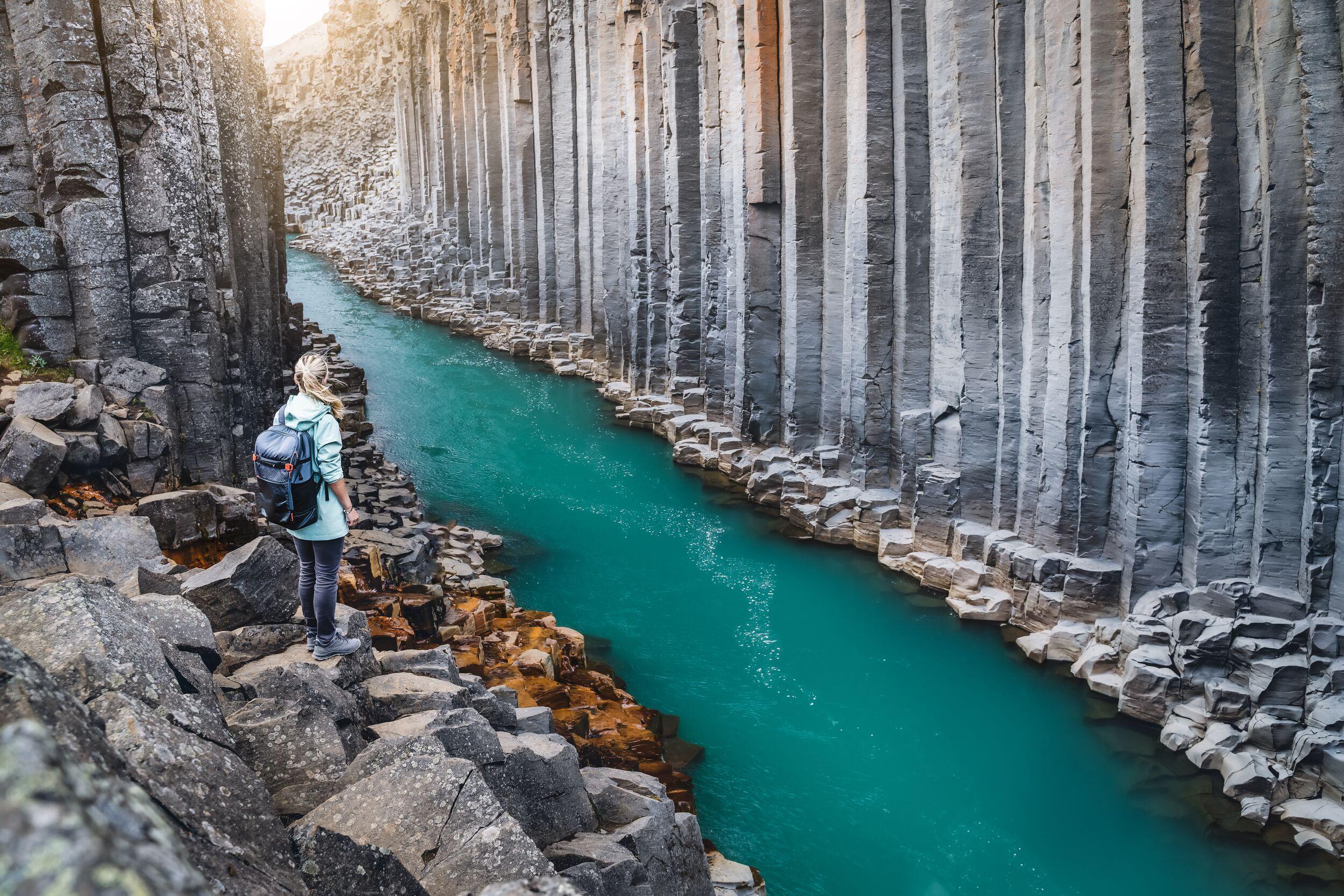
What makes a tour eco-friendly in Iceland?
An eco-friendly tour minimizes environmental impact through small-group sizes, adherence to "Leave No Trace" ethics and careful planning that protects fragile ecosystems. Choosing publicly certified operators ensures environmental standards are upheld.
How can I minimize my environmental impact while hiking in Iceland?
Stick to designated trails and campsites to prevent erosion and undue damage to terrain. Do not collect natural items, never drive off-road, and use reusable water bottles — the tap water in Iceland is excellent.
Are glacier tours safe and sustainable?
Yes! Icelandic Mountain Guides maintain rigorous safety standards, including employing well-trained guides and maintaining quality gear. We design tours with an eye on minimizing our ecological footprint. Oh, plus we were the first company to offer certified glacier walks in Iceland.
What should I pack for an eco-friendly adventure in Iceland?
Bring reusable water bottles, wear layered, moisture-wicking clothing, and choose durable and eco-friendly gear.
Do Icelandic Mountain Guides offer carbon-neutral tours?
Yes, we offer a number of carbon-neutral day tours and are working toward making all our tours neutral by planting native trees to offset emissions.
How does Icelandic Mountain Guides ensure environmental responsibility on their tours?
Icelandic Mountain Guides commits to ISO 14001 environmental management, regular policy reviews, eco-friendly vehicles and promoting public transport. Internally, we provide office incentives for green commuting, recycling programs, environmental funding, and extend ongoing support for NGOs and conservation efforts.
Can I participate in conservation efforts during my trip?
Absolutely! You’ll be doing just that by booking your hiking or glacier trek with Icelandic mountain Guides since a portion of every tour fee goes to an environmental fund, which finances projects like trail restoration, revegetation and infrastructure upkeep
What are the best times of year for sustainable travel in Iceland?
Summer (June–August) offers long daylight and smoother logistics. Off-peak seasons can ease pressure on heavily trafficked sites like Landmannalaugar, which also uses parking reservations to limit congestion.
Are there any regulations I should be aware of when exploring Iceland’s natural areas?
Yes: off-road driving is illegal and highly damaging to Iceland’s delicate natural environment. Areas like Landmannalaugar now require parking reservations during peak hours to reduce environmental strain. When travelling in Iceland, you should always stick to marked trails, respect land-use rules and obey any and all trail and road closures.
How does tourism impact Iceland’s environment, and what is being done to mitigate it?
Tourism can damage delicate soils and vegetation. Icelandic Mountain Guides and others mitigate this through environmental policies, dedicated funding for trail maintenance, reforestation, legacy travel declarations, and industry certifications.
Keep me informed about the Icelandic Mountain Guides Blog
Outdoor adventure in Iceland is our specialty. Subscribe to our free monthly newsletter to learn when to go, what to do and where to have the best adventures in Iceland.
Related Blog Posts
Related Tours
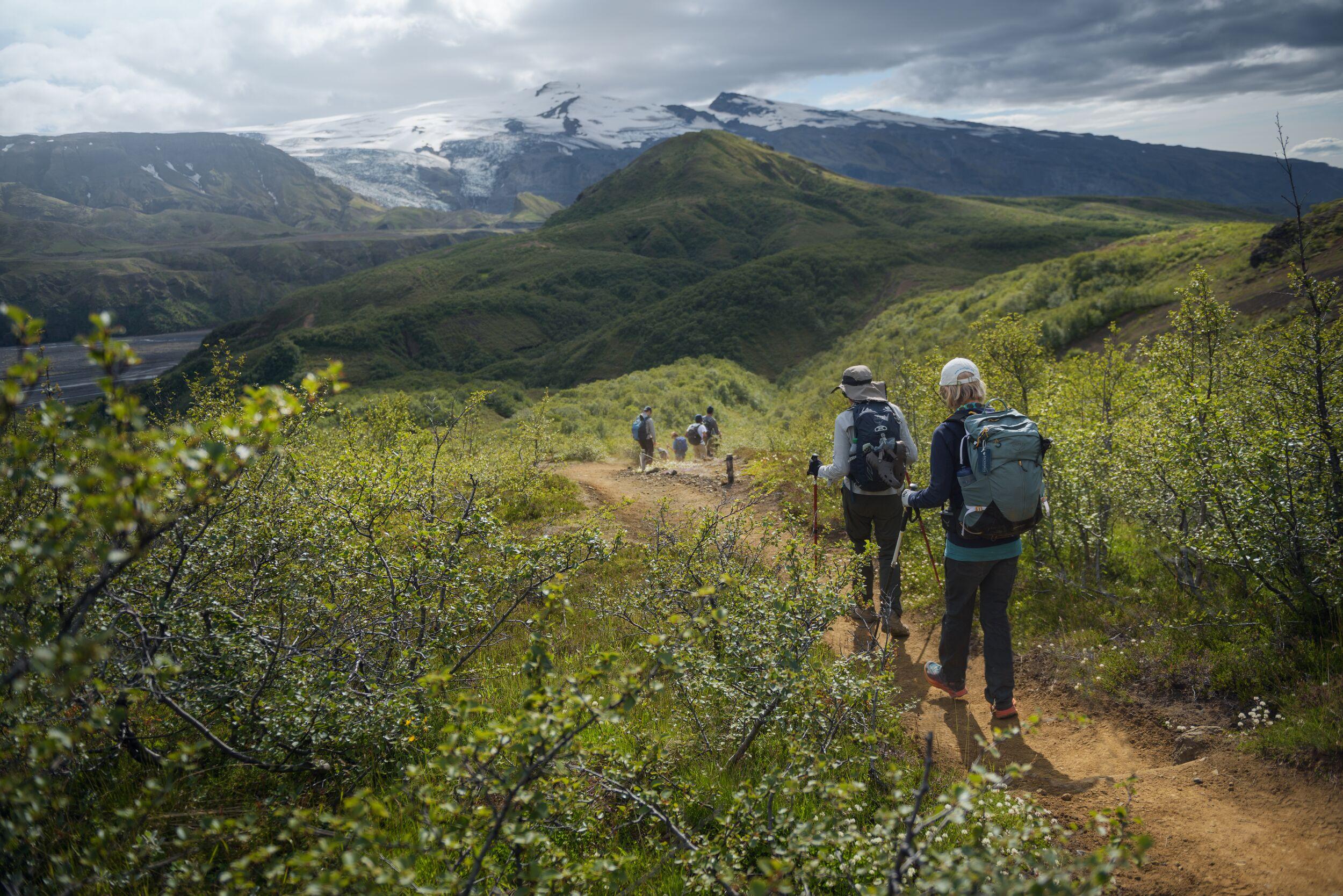
4-Day Thorsmork Glacier Valley Hiking Adventure
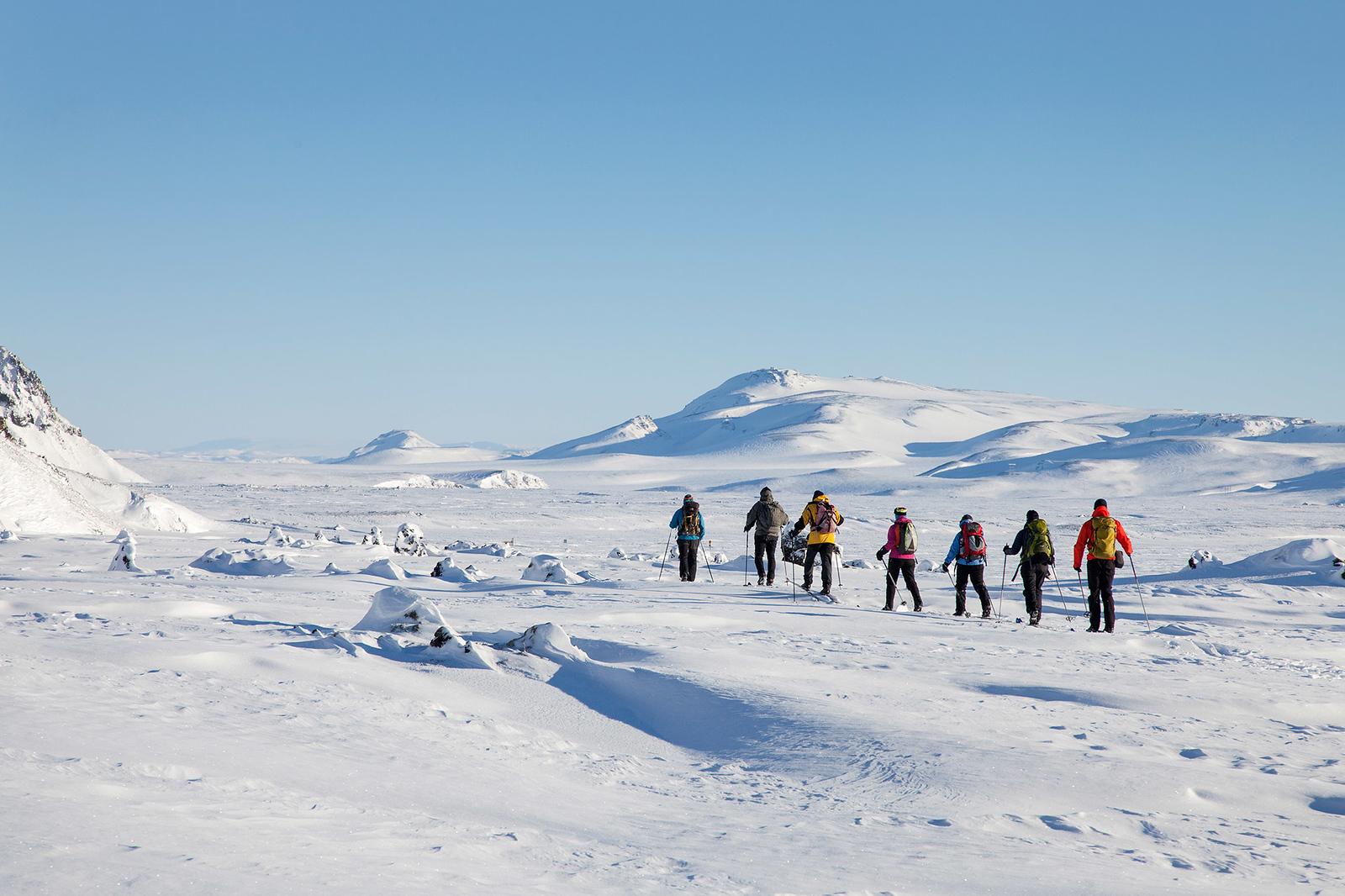
Landmannalaugar in Winter
